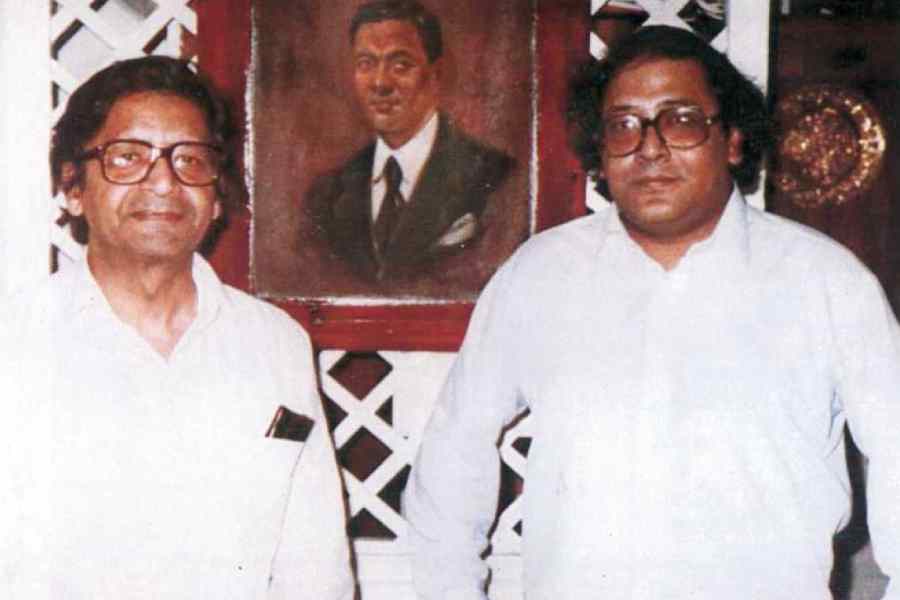NAIPAULS OF NEPAUL STREET: A MEMOIR
By Savi Naipaul Akal
Speaking Tiger, Rs 499
The surname, Naipaul, has almost become synonymous with Sir V.S. Naipaul, undoubtedly the most famous member of the Naipaul family. But the Naipaul family, which boasted the novelist brother-duo, Vidia and Shiva, had no dearth of scholarly or writerly talents. The love for the written word and the knack for storytelling run deep in the Naipaul bloodline. Seepersad Naipaul, V.S. Naipaul’s father, was an autodidact and self-made man whose only ambition was to see his children receive accolades and laurels in the world of letters. Seepersad himself harboured literary ambitions; he wrote macabre, real-life, journalistic pieces for the Trinidad Guardian and, later, published a collection of short stories, Gurudeva and Other Indian Tales, capturing the shades of Indian life in Trinidad, then a colony of the British crown.
Savi, aka Savitri Naipaul Akal, presents a brief family history of the Naipauls of Nepaul Street, Port of Spain, Trinidad. The book recounts the humble beginnings of life for the Naipauls, second-generation indentured labourers, and their travails, struggles to escape the barrenness of life in the island country, their hard-earned success, and eventual fallout. Except Savi, no other Naipaul lives in Trinidad now; all the other Naipaul siblings are scattered in North America or the United Kingdom. The next generation has moved further away, to newer metropolises. This memoir is about life in Trinidad as perceived from an Indo-Trinidadian sensibility. Others may argue that Trinidad is the main protagonist, presenting a suitable background to all the minor characters that bow in and bow out. After reading the book, it is difficult to resist an urge to visit the islands and know more about Indians who still call it home. The book’s ability to compel us to imagine and yearn for another world, no matter how crumbling and bewildering, is one of its endearing qualities and successes.
Many years after the death of her husband, Dropatie travels back to India to reconnect with her roots. But upon visiting her ancestral village, she finds herself out of place and is thoroughly disgusted by the mannerisms of her ‘own people’. On being asked by the author about her trip to India, Dropatie remarks, “Beti, India is for Indians.” This disenchantment haunts the Naipauls forever. “But is Trinidad really for Trinidadians?” Rephrasing the rhetorical question, the author underlines the traction among various ethnic groups and the interplay of identitarian polity in the essentially multicultural setting of the islands. The statement also speaks volumes about the cultural identity of the Naipauls and Indian-origin Trindadians. The in-betweenness, fluidity, and amorphousness are not always celebratory aspects of one’s identity. For the Naipauls, it also cultivated feelings of unease and non-belonging.
The book is dedicated to Seepersad and Dropatie Naipaul, parents of the author, both first-generation, indentured labourers who grew up in the Caribbean islands dreaming of freedom and financial independence. They worked hard, did odd jobs, lived a frugal life and, much like typical Indian middle-class parents, bore the heavy cross of colonial pathos. Theirs was an aspirational English class. In the colonial era, the Naipaul siblings prepared for the prestigious island-scholarship and felt that winning it would be their ticket to success. With the exception of the elder-most Naipaul sibling, Kamla, the rest studied in universities based in the UK. Vidia and Shiva won the island-scholarship and secured admission to Oxford University. Both suffered nervous breakdowns while pursuing their undergraduate studies. The alienating treatment meted out to scholarship students from a colony at Oxford further aggravated their condition. The Naipaul family hoped that Shiva would benefit from Vidia’s earlier experience and the fact that the latter had a base in London. But Vidia was never the son or the brother who could be counted on. Vidia betrayed the hopes of the family and Shiva was left to fend for himself alone. In 1971, the youngest of Naipaul siblings, Nalini, got admission to a university in London. Vidia, arrogant, haughty and devoid of any genuine concern for his family and friends, went back on his promise to pay for Nalini’s fee and stay. Savi establishes Shiva as affable and the warmer of the two brothers, bearing an acute sense of responsibility towards his family. The Naipaul family could never recuperate from the untimely and sudden demise of Shiva who died
at the age of 44. Dropatie confessed on her deathbed that she only had one son.
The memoir bursts the myriads of myths that V.S. Naipaul had built to secure a sympathetic place for himself. Savi also makes mention of the missing diaries of her mother, which were last in Kamla’s custody. This is a life-narrative of a diasporic family, which has given stars to the world of literature at the cost of silencing its more humane and ordinary members.










